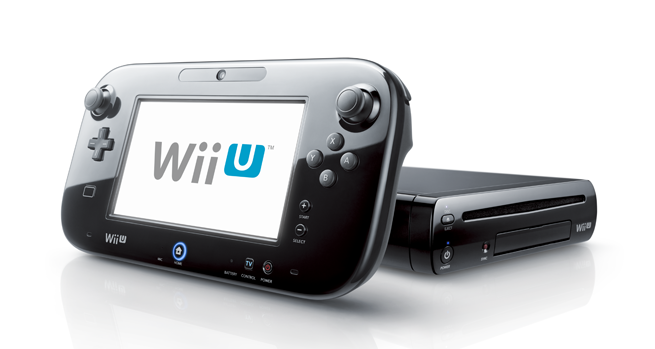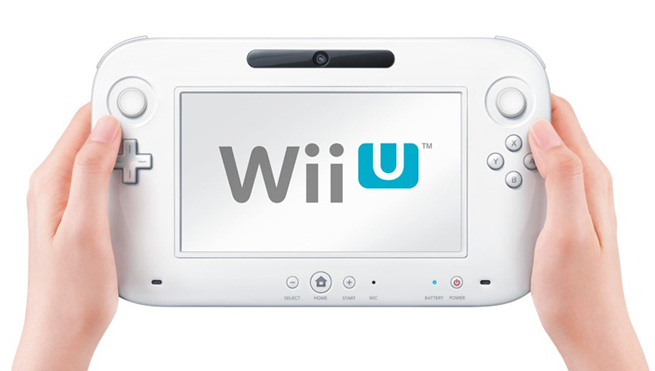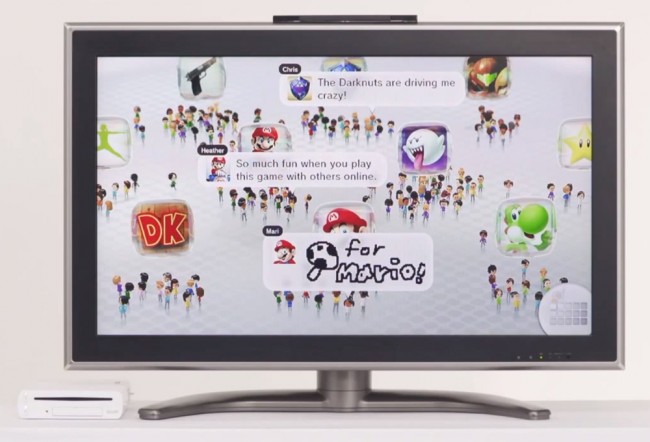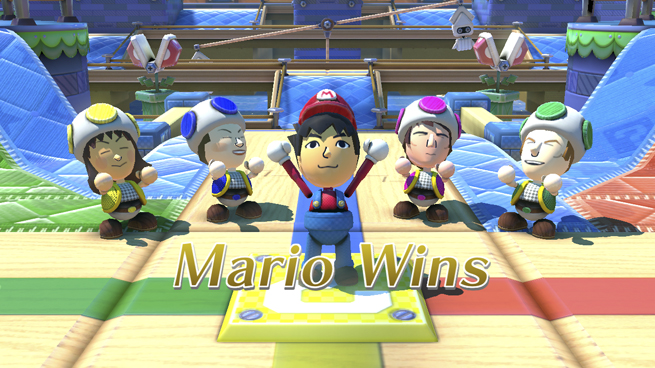Maybe you’ve heard about the Nintendo Wii U.
After a major marketing push and a torrential amount of Internet buzz, the successor to Nintendo’s wildly successful Wii video game console finally arrived in stores last Sunday. The gaming industry and the consumer base that feeds it have largely passed judgment already. But if you bought one of the 97 million Wii units solid in the last six years, and you consider yourself a casual user, you might wonder whether it’s worth your time and money to upgrade to the latest model.
Naturally, the answer depends on what you want it for.
Which model to get
This marks Nintendo’s attempt to catch up to its competitors on multiple fronts. We’ve covered the basics before, but the Wii U comes in two different packages — a white Basic Set retailing at $299.99 featuring an 8GB hard drive, and a black, 32GB Deluxe Set for $349.99 that includes a copy of Nintendo Land, a party-game compilation (read our full review here). That’s a significant increase from the Wii’s original $249.99 price back in 2006. Unlike its predecessor, the Wii U comes HD-ready, albeit at the lower end of the high-definition scale: 720p rather than 1080p.
Here’s a rundown of everything that comes in the box:
[vb_gallery id=570554]
If you don’t plan to download a lot of games or apps, you might not need the bigger 32GB system. That said, the Deluxe set does include Nintendo Land, one of its best — and one of the few — casual gameplay titles at $10 off MSRP.
The big difference
The centerpiece of the Wii U is the GamePad, a handheld controller with a 6.2-inch touchscreen that combines a video game feel with tablet functions.
A nonstandard button layout presents a few problems for gamers, as we’ve pointed out already, but that won’t bother anyone coming off the Wii’s two-controller approach. In fact, I’ve already seen many clever applications for the GamePad’s capabilities — holding it up for “augmented reality” simulations, for example. But the Wii U’s not-so-secret weapon, asymmetrical gameplay, offers amazing possibilities by letting two or more players (one on the GamePad screen, the rest using the ubiquitous Wii Remotes or the Wii U Pro controller) experience the same game in very different ways, frequently with very different goals.
More often than not, you can also transfer what you’re doing to the GamePad’s screen entirely, freeing up the television for someone else to use while you continue your game or movie in peace. It’s a very liberating option, though at only 480p, the picture likely won’t be as sharp, and I frequently had to crank the Pad’s volume to maximum to hear Netflix films from its tinny little speakers. Plugging in a pair of earbuds only helps slightly.
Games, however, come through clear and strong. And the it’s games you play on the Game Pad that really show you the imagination and potential of the Wii U.
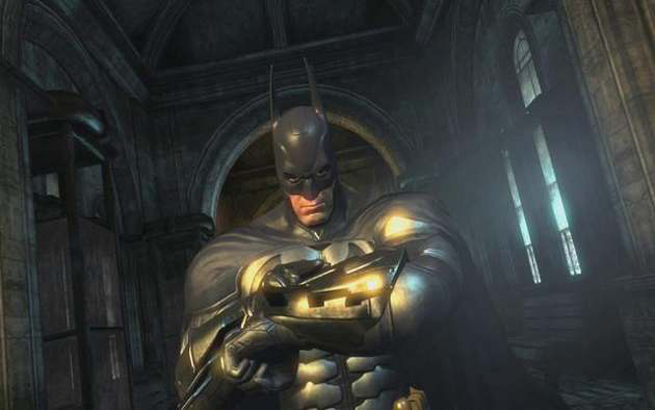
The games
Another big change from the last generation to this one: a renewed focus on hardcore video games.
Nintendo spent the last year talking up the Wii U’s vast third-party support — games developed by companies other than Nintendo. That means a lot more content for your console, but it’s content designed more for the Call of Duty-class of gamers than people who enjoyed Wii Sports six years ago. Those brilliantly lightweight games have largely taken a back seat. As such, the Wii U has a very broad, very impressive lineup of games available right at launch, featuring some of the biggest and best franchises around: Call of Duty: Black Ops II, Mass Effect 3, and Batman: Arkham City, among others. Several of these released earlier this year on other consoles, but now they’re available to Nintendo customers as well.
A lot of these games hold up well against the versions seen on other consoles, and exclusives like the ever-cheerful New Super Mario Bros. U and the pitch-black ZombiU provide solid entertainment. But if you fell in love with the motion-controlled playground the Wii gave you, odds are you won’t be smitten this time.
Indeed, neither Wii U package even includes those Wii Remotes or Nunchucks even though several games in Nintendo Land require them to play with your friends.
More than a game console
Above and beyond the games, Nintendo wants the Wii U to be your all-in-one home entertainment device. You can read our detailed analysis of its online services, but its Miiverse social network skews almost entirely toward gamers, with message-board communities built around specific games … and one Netflix community. It carries a sturdy Internet browser (called “Internet Browser,” just to drive home its generic nature) and Skype-quality video conferencing as well, limited to your Miiverse connections.
Not only can you stream Netflix but now Hulu and Amazon Prime as well. I’m also very excited to see more of Nintendo TVii, a service that allows you to stream and digitally record live television à la TiVo, but while its icon already lives on the Wii U’s main page, TVii itself won’t launch until sometime in December. If you’re basing your purchasing decision on what you can watch on the Wii U, I’d recommend holding off until we see the whole picture.
In fact, that’s the best advice I can offer almost across the board: Wait.
Future potential
It’s easier to recommend the Wii U for someone who wants to either dive head-first into the deep end of modern video games or dip a toe into the shallows while keeping one eye firmly fixed on the far end of the pool. For established gamers, the non-standard controllers and their layouts will feel counter-intuitive at best, particularly when playing well-worn franchises … something newcomers won’t notice or mind.
Whether to trade up from the first Wii represents a much stickier question. Wii games will play on the newer console (not vice-versa), and the feature set expands in important ways, but the Wii U takes perhaps a step too far away from the active play that won so many people over. You won’t ever swing the GamePad around to pick up a spare, smash a tennis ball, or nail a line drive to center field. At present, the Wii U must import those experiences from the Wii. Or you can do all that on your current Nintendo console without spending the extra $300.
That might very well change as more games release in the next six months to 12 months. As-is, the Wii U offers a different kind of gameplay — it’s still social-based, still focused on enjoying time with the people around you, and very compelling in its own way. If that’s the interaction you bought the Wii for, the Wii U truly is a worthy successor. It does everything the first did and more, but casual, family-oriented games are thin on the ground, and in light of the shift to hardcore (and Nintendo’s own assertion that it will continue to support the Wii), I can’t say how much that might change.
I see great potential for the system, but in a lot of ways, it hasn’t figured out which direction it really wants to travel in yet. So take a page from the Wii U’s own gentle, unhurried vibe. Sit back, wait, and see.
Click here for all of GamesBeat’s Wii U launch coverage.
VentureBeat's mission is to be a digital town square for technical decision-makers to gain knowledge about transformative enterprise technology and transact. Learn More
